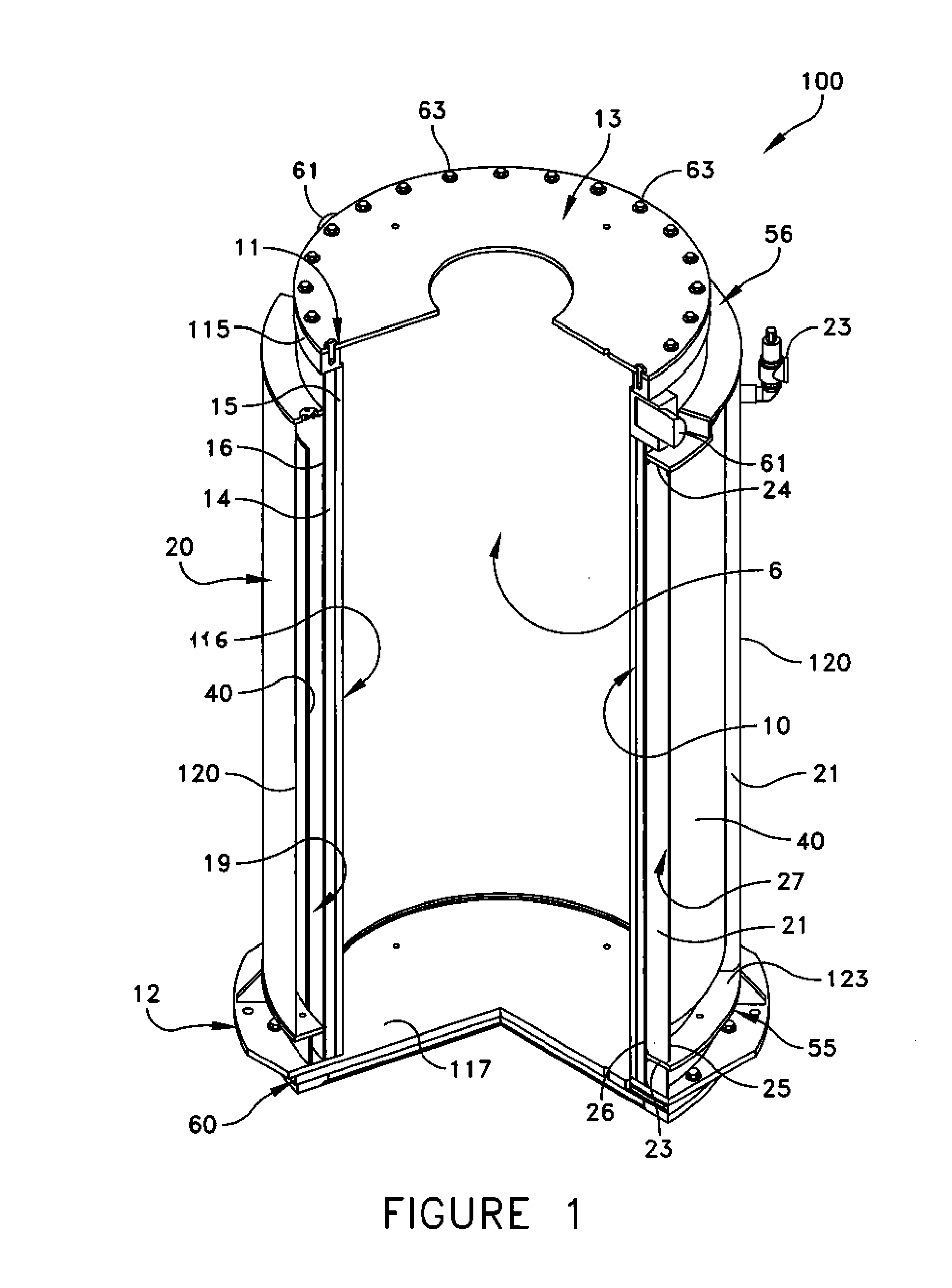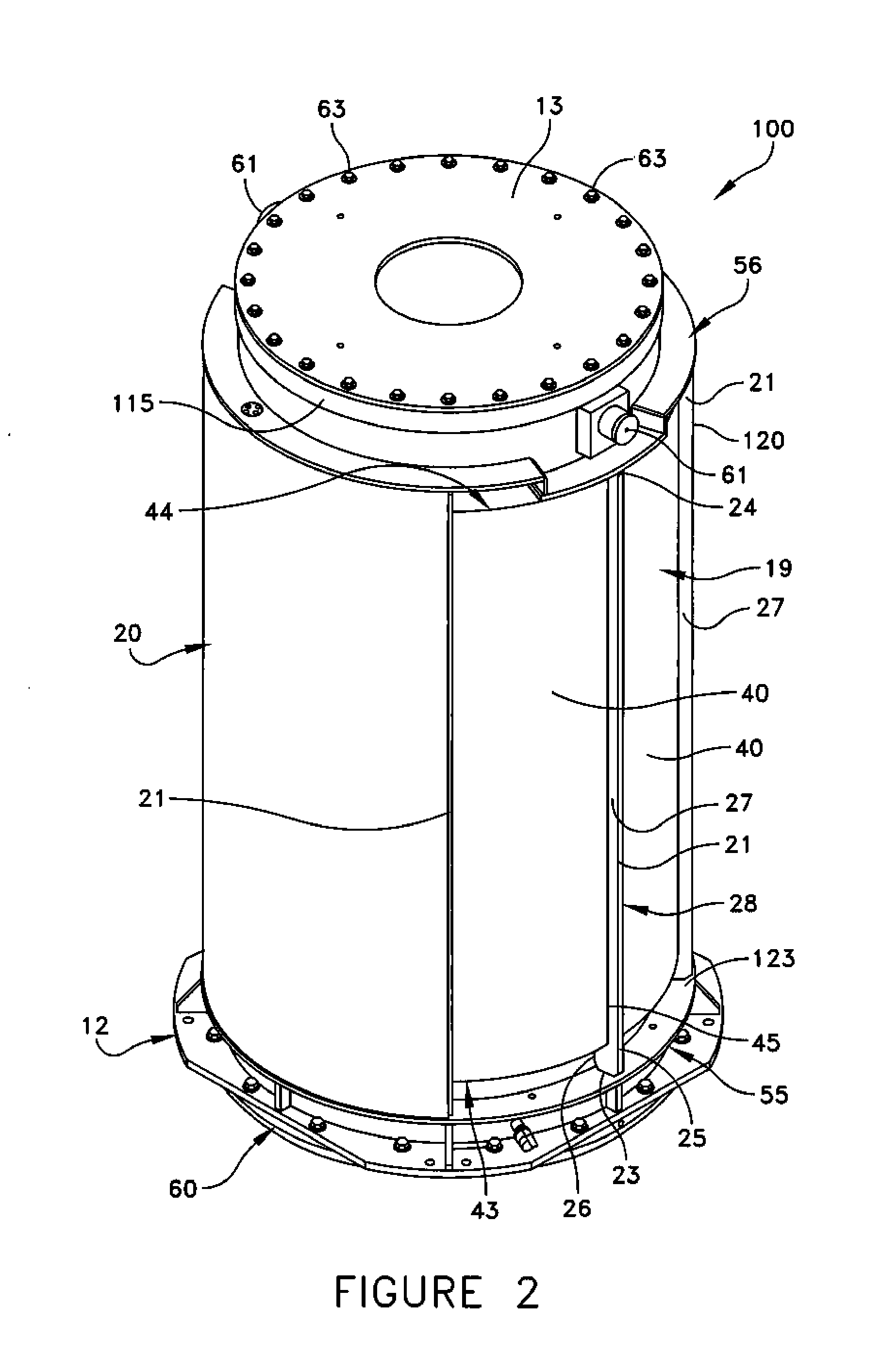Apparatus for providing additional radiation shielding to a container holding radioactive materials, and method of using the same to handle and/or process radioactive materials
a technology for radioactive materials and apparatus, applied in nuclear engineering, nuclear elements, nuclear engineering problems, etc., can solve the problems of large amount of mass, insufficient canister alone, and insufficient shielding of gamma radiation, etc., to achieve the effect of reducing the amount of mass and reducing the risk of radiation damag
- Summary
- Abstract
- Description
- Claims
- Application Information
AI Technical Summary
Benefits of technology
Problems solved by technology
Method used
Image
Examples
Embodiment Construction
[0040]Referring to FIG. 1, a transfer cask 100, according to one embodiment of the present invention, is illustrated. The transfer cask 100 is generally cylindrical in shape and vertically oriented such that its axis is in a substantially vertical orientation. The shape of the transfer cask 100, however, is not limiting of the invention and can include a multitude of other horizontal cross-sectional shapes, including without limitation square, rectangular, triangular and oval shaped transfer casks. The size, height and orientation of the transfer cask 100 also are not limiting of the invention but will be dictated by safety considerations, the desired load to be accommodated and the facility in which it is to be used.
[0041]The transfer cask 100, as illustrated, is designed for use with and to accommodate a multi-purpose canister (“MPC”) in effectuating HLW transfer procedures. Preferably, the transfer cask 100 can accommodate no more than one canister, the invention is not so limite...
PUM
 Login to View More
Login to View More Abstract
Description
Claims
Application Information
 Login to View More
Login to View More - R&D
- Intellectual Property
- Life Sciences
- Materials
- Tech Scout
- Unparalleled Data Quality
- Higher Quality Content
- 60% Fewer Hallucinations
Browse by: Latest US Patents, China's latest patents, Technical Efficacy Thesaurus, Application Domain, Technology Topic, Popular Technical Reports.
© 2025 PatSnap. All rights reserved.Legal|Privacy policy|Modern Slavery Act Transparency Statement|Sitemap|About US| Contact US: help@patsnap.com



